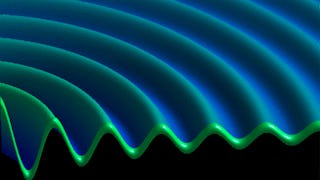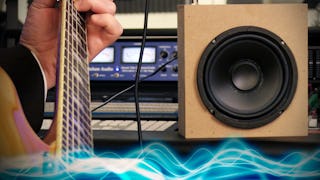Learners might have learned the basic concepts of the acoustics from the ‘Introduction to Acoustics (Part 1).’ Now it is time to apply to the real situation and develop their own acoustical application. Learners will analyze the radiation, scattering, and diffraction phenomenon with the Kirchhoff –Helmholtz Equation. Then learners will design their own reverberation room or ducts that fulfill the condition they have set up.



(45 reviews)
Skills you'll gain
Details to know

Add to your LinkedIn profile
5 assignments
See how employees at top companies are mastering in-demand skills

There are 6 modules in this course
What's included
2 videos
You will be going to learn breathing sphere problem, then compare with the trembling sphere problem.
What's included
8 videos1 assignment
First, you will learn Kirchhoff-Helmholtz equation, then you will adapt into the baffled circular piston problem.
What's included
8 videos1 assignment
Using Kirchhoff-Helmholtz equation that you have learned last week, you will apply into diffraction and scattering problem.
What's included
7 videos1 assignment
Now you will learn very practical acoustical phenomenon. With reverberation period and Sabine's theorem, you will be able to design an acoustical room that satisfies given condition.
What's included
8 videos1 assignment
For the last, you will learn Helmholtz Resonator and the phenomenon about the duct acoustics
What's included
8 videos1 assignment
Earn a career certificate
Add this credential to your LinkedIn profile, resume, or CV. Share it on social media and in your performance review.
Instructor

Explore more from Physics and Astronomy


Korea Advanced Institute of Science and Technology(KAIST)


University of Rochester
 Status: Free Trial
Status: Free Trial
Rice University
 Status: Free Trial
Status: Free Trial
Rice University
Why people choose Coursera for their career




Learner reviews
45 reviews
- 5 stars
77.77%
- 4 stars
20%
- 3 stars
0%
- 2 stars
0%
- 1 star
2.22%
Showing 3 of 45
Reviewed on Mar 8, 2021
provide the textbook, it really helps you to accomplish the course much easier!
Reviewed on Dec 19, 2020
Part 2 was excellent!It would be nice to have reference to the text book, and also sometimes the questions in the quizzes are hard to stand because of the language.
Reviewed on May 15, 2018
A great course overall to understand the basic theory of acoustics. I have some suggestions. Quizzes need to be improved with more questions. I thought the quizzes were too easy

Open new doors with Coursera Plus
Unlimited access to 10,000+ world-class courses, hands-on projects, and job-ready certificate programs - all included in your subscription
Advance your career with an online degree
Earn a degree from world-class universities - 100% online
Join over 3,400 global companies that choose Coursera for Business
Upskill your employees to excel in the digital economy
Frequently asked questions
Access to lectures and assignments depends on your type of enrollment. If you take a course in audit mode, you will be able to see most course materials for free. To access graded assignments and to earn a Certificate, you will need to purchase the Certificate experience, during or after your audit. If you don't see the audit option:
The course may not offer an audit option. You can try a Free Trial instead, or apply for Financial Aid.
The course may offer 'Full Course, No Certificate' instead. This option lets you see all course materials, submit required assessments, and get a final grade. This also means that you will not be able to purchase a Certificate experience.
When you enroll in the course, you get access to all of the courses in the Specialization, and you earn a certificate when you complete the work. Your electronic Certificate will be added to your Accomplishments page - from there, you can print your Certificate or add it to your LinkedIn profile. If you only want to read and view the course content, you can audit the course for free.
If you subscribed, you get a 7-day free trial during which you can cancel at no penalty. After that, we don’t give refunds, but you can cancel your subscription at any time. See our full refund policy.
More questions
Financial aid available,


